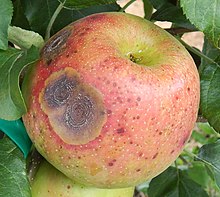
The Hypocreales are an order of fungi within the class Sordariomycetes. In 2008, it was estimated that it contained some 237 genera, and 2647 species in seven families. Since then, a considerable number of further taxa have been identified, including an additional family, the Stachybotryaceae. Wijayawardene et al. in 2020 added more families and genera to the order. According to the Catalog of Life, As of April 2021 the Hypocreales contains 6 families, 137 genera, and 1411 species. Hyde et al. (2020a) listed 14 families under Hypocreales, while, Wijayawardene et al. (2022) accepted 15 families in the order, where Cylindriaceae was additionally added. Earlier, Hyde et al. (2020a) had placed Cylindriaceae in class Xylariomycetidae. Samarakoon et al. (2022) agreed. Hence, Cylindriaceae should have been excluded from Hypocreales and placed in Xylariomycetidae. Xiao et al. (2022) recently introduced a new family Polycephalomycetaceae to Hypocreales.

The Nectriaceae comprise a family of fungi in the order Hypocreales. It was circumscribed by brothers Charles and Louis René Tulasne in 1865. In 2020, an Outline of fungi was produced and listed 70 genera and about 1,336 species.

Hypocreomycetidae is a subclass of sac fungi.
Jobellisia is a genus of fungi within the monotypic family Jobellisiaceae and the monotypic order Jobellisiales and also the subclass Hypocreomycetidae, and class Sordariomycetes. The genus was circumscribed by Margaret Elizabeth Barr-Bigelow in 1993 with Jobellisia luteola as the type species. It contains species that grow on dead wood and bark in tropical and temperate regions of the Northern Hemisphere.
The Trichosphaeriales are an order of sac fungi. It is monotypic, and consists of the single family, the Trichosphaeriaceae. In 2017, the family of Trichosphaeriaceae was placed in Diaporthomycetidae families incertae sedis, which was accepted by Wijayawardene et al. (2018), and Wijayawardene et al. 2020. The order of Trichosphaeriales was also unplaced. They are generally saprobic and pathogenic on plants, commonly isolated from herbivore dung.

Monochaetia is a genus of fungi in the family Sporocadaceae. Species in the genus are typically plant parasites and saprobes, and cause leaf spot diseases on various hosts.

Glomerellaceae is a monotypic family of fungi in the class Sordariomycetes that contains only one genus, Colletotrichum.
Volutella is a genus of fungi belonging to the family Nectriaceae.

Diaporthomycetidae is a subclass of sac fungi under the class Sordariomycetes.

The Sporocadaceae are a family of fungi, that was formerly in the order Xylariales. It was placed in the Amphisphaeriales order in 2020.
Pseudopestalotiopsis is a genus of plant pathogens in the family Sporocadaceae.
Savoryellomycetidae is a subclass of sac fungi within the class of Sordariomycetes. It contains 4 known orders of Conioscyphales, Fuscosporellales, Pleurotheciales and Savoryellales.
Conioscyphales is an order of freshwater and terrestrial fungi within the division Ascomycota. It is in the subclass Savoryellomycetidae and the class Sordariomycetes and the subdivision of Pezizomycotina.
Fuscosporellales is an order of fungi within the phylum of Ascomycota and in the class Sordariomycetes and subdivision of Pezizomycotina.
Savoryellaceae is a family of aquatic based fungi. It is the only family in the monotypic order Savoryellales within the class Sordariomycetes, division Ascomycota.
Pisorisporiales is an order of fungi within the phylum of Ascomycota and in the class Sordariomycetes and subdivision of Pezizomycotina and also its own subclass Pisorisporiomycetidae.
Bartalinia robillardoides is a species of fungi within the genus Bartalinia and the Sporocadaceae family. Distinguished by their unitunicate asci, containing 3-4 septate, Bartalinia robillardoides species have been found in water samples and growing on medium like flowering shrubs and trees. Collections of this species have been collected in Australia and New Zealand, Europe, South America and Asia. It has been identified to be both endophytic and pathogenic. This species can cause leaf spots that raise concerns to economically valuable plants.
Pleurotheciaceae is a family of ascomycetous fungi within the monotypic order of Pleurotheciales in the subclass Savoryellomycetidae and within the class Sordariomycetes.
Pararamichloridium is a genus of fungi in the monotypic family Pararamichloridiaceae and within the monotypic order of Pararamichloridiales and also in the subclass Hypocreomycetidae. They are saprobic on wood in terrestrial and freshwater habitats.
Torpedosporaceae is a monotypic family of ascomycetous marine based fungi within the order of Torpedosporales in the subclass Hypocreomycetidae and within the class Sordariomycetes. They are saprobic on intertidal mangrove wood and roots, bark leaves, and sand in various marine habitats.







